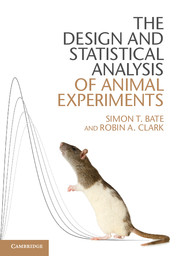7 - Conclusion
Published online by Cambridge University Press: 05 March 2014
Summary
In this text we have aimed to show the reader how the use of experimental design and statistics can help the researcher gather the most information from each animal experiment while using as few animals as possible. Returning to the statement of Russell and Burch (1959, p. 111):
Every time any particle of statistical method is properly used, fewer animals are employed than would otherwise have been necessary.
We hope that this text has convinced the reader that there is much merit in this statement.
The book has been aimed at any researcher performing animal experiments. Some of the subject matter can be applied by scientists without the help of a professional statistician. We have also used this platform to introduce the reader to some of the more complicated examples of experimental design and statistical analysis, examples of which are commonly found in real-life experiments. Hopefully we have given a flavour of these methods and encouraged the reader to either try them out for themselves or seek professional help to get started. Remember, as explained in Gaines Das (2004), sometimes it is the collaboration between the biologist and the statistician at all stages of the experimental process that leads to a successful experiment.
- Type
- Chapter
- Information
- The Design and Statistical Analysis of Animal Experiments , pp. 293 - 294Publisher: Cambridge University PressPrint publication year: 2014

